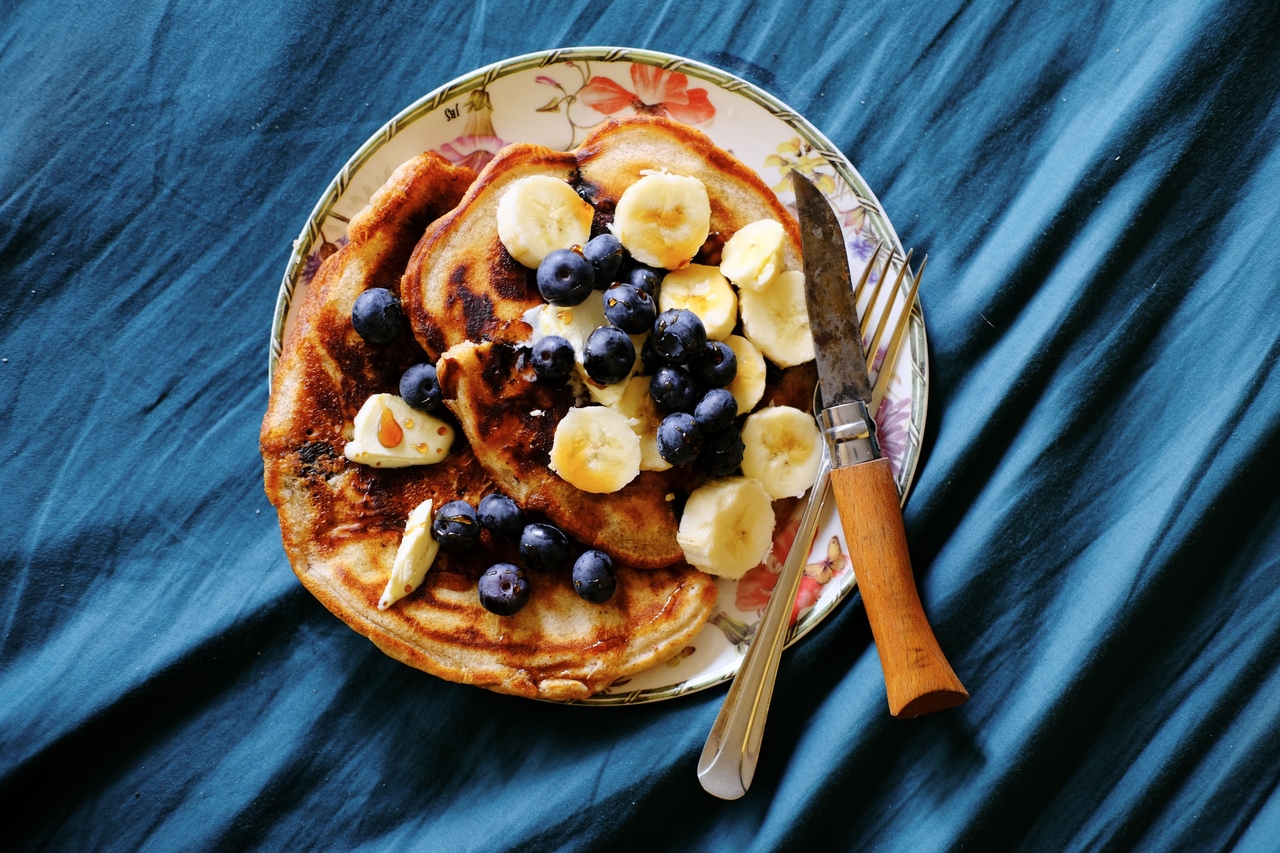Pancakes

A plate of stacked pancakes with blueberries and bananas, with syrup drizzled over top. In Noemi's apartment in Amsterdam, 2022
We made a purely veganistic batter, with bananas squashed in for extra structure and richness. These tasted exceptionally decadent. See Wikipedia for more background. There appear to be many varieties of pancakes around the world, of course.
One particular variant from Northern America is a pancake made with sourdough. Prospectors would be foraying into new terrain looking for resources, carrying sourdough with them because it could last indefinitely so long they replenished it with water and flour. Much easier than having to find and buy yeast in areas where that wasn't likely to be very common. I've initialized a sourdough starter today (2022-08-20) that I will definitely use to create some pancakes with in the near future.
Gumbo

Lousiana gumbo with okra, in my apartment in Amsterdam, 2022
This dish is the result of a fascinating melting pot of cultures in Lousiana. French, West-African, Spanish, and indigenous influences all find their way into gumbo. And I am just making it for the first time, only now becoming aware of its multi-faceted history.
I had been craving a good okra soup, and I knew that gumbo existed, but was never really clear on what it entailed. The Wikipedia page is a good start, naturally. But Adam Ragusea has also made a very insightful video on this dish. I also took inspiration from Andre Moore's chicken & sausage gumbo (though I obviously made it without the chicken and sausage).
There are many variations of gumbo going around, but at least all those that I've seen have the Creole holy trinity in common. Similar to the French mirepoix and the Italian soffritto, the holy trinity is a flavor base. It consists of celery, bell peppers, and onions.
One way to classify the different gumbo dishes, is by the type of thickener that they use. There exist mostly three different options: roux, okra, and filé powder. These all stem from different cultural heritages. Roux comes from French cuisine, okra is from West Africa, and filé powder is from indigenous Americans.
I started with a roux. According to what I read, people from New Orleans like their roux very dark. This is a dangerous game to play, as we do not want to burn the roux. Mix equal parts oil and flour thoroughly, and then heat over medium flame while stirring constantly. It took a solid twenty minutes of stirring before it was darkened to a caramel color, and I didn't dare go further yet. I put in the Creole holy trinity and sauteed everything. Then pour in some good vegetable stock (lately I've taken to keeping vegetable peels in the freezer, and periodically making a large batch of bouillon from them). Add in okra, season with thyme, bay leaves, and Cajun spices, and leave simmering.
In a separate pan, I fried up some vegetarian sausage that I cut into slices. Combine everything near the end, and serve over rice.
One note that I want to make about this dish, is that the sliminess I expected from okra's did not really materialize. Is it the fact that I bought these okra's frozen? Or maybe their ratio in comparison with the rest of the dish was just too low. Anyway, the gumbo was nicely thickened from the roux and the okra, without the sliminess that some people despise anyway. Maybe it was for the better, by way of introduction for my flatmate who had never heard of okra before.